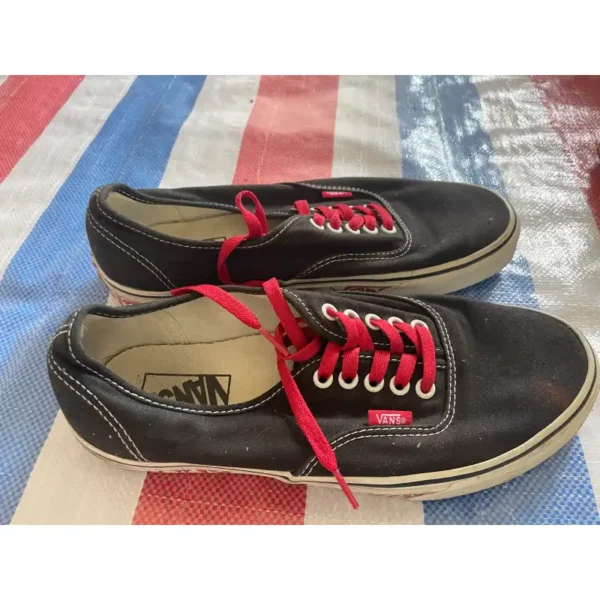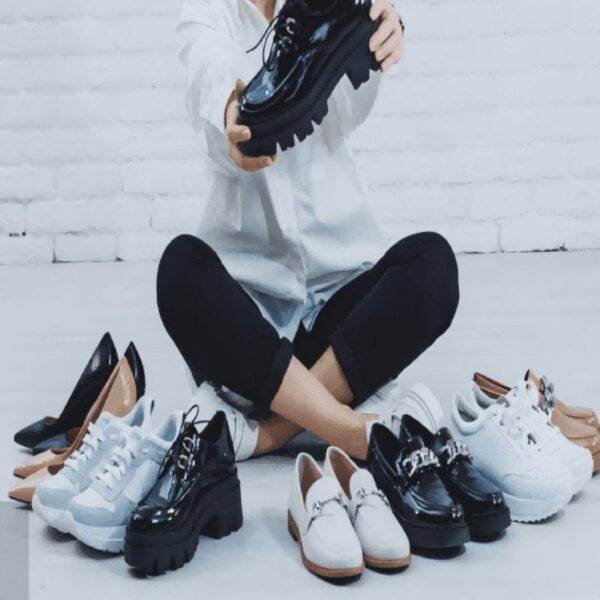In today’s consumer market, the second-hand shoes market is undergoing a profound transformation. From the awakening of environmental protection concepts to consumers’ pursuit of cost-effectiveness and personalization, the second-hand shoes market has gradually moved from a marginal market to the mainstream. According to the latest market research, the global second-hand shoes market is expected to expand rapidly at an annual compound growth rate of 12.5% in the next decade. This trend not only reflects the change in consumer concepts, but also brings unprecedented opportunities and challenges to second-hand shoes suppliers. This article will explore in depth how to meet the diverse needs of consumers and promote the sustainable development of the second-hand shoes market.
Ⅰ. Global pattern and development trend of the second-hand shoes market
1. Market growth trend
The growth trend of the global second-hand shoes market is remarkable. From US$12.8 billion in 2021 to US$43.1 billion in 2032, this huge market potential has attracted the attention of many practitioners. Behind this growth is consumers’ pursuit of sustainable fashion and their new understanding of the unique value of 2nd hand shoes.
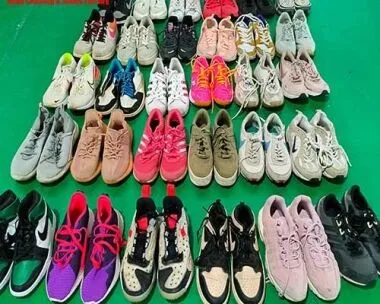
2. Key regions and market players
Some of the key players and regions that have played a role in the second-hand shoes market include Pakistan and Dubai. This is due to their professional capabilities of grading and classification. Meanwhile, there is also an increase in online resale platforms like ThreadUp and Poshmark, which surge a wider channel of circulation for second-hand shoes. These platforms provide an easy way of trading besides adding the technology factor to the shopping experience of the consumer through innovation.
3. Market segmentation and product types
The secondary shoes market includes used sneakers, used boots, used brand shoes, and used dress shoes, etc. Among the different types, there is a very rampant demand in the market for sports shoes. The young customers prefer branded sports shoes. Taking into account regional differences, the attitude towards purchasing second hand also significantly varies across different markets. The U.S. market has this barrier, where people do not like the idea of used shoes; however, in the U.K. or French markets, there is increasing interest due to a rising interest in the environment.
Ⅱ. Why do consumers choose second-hand shoes?
Consumers’ preference for second-hand shoes is driven by multiple factors, such as second-hand shoes’ environmental protection, cost-effectiveness, uniqueness and retro charm, which are explored in detail in the article. Here, we will summarize the key reasons:
1. Awakening of environmental awareness
In modern times, with increasing surge environmentalist mindedness, consumers are overly conscious about the sustainability of products. Selling second-hand shoes brings a reduction in the need for new shoes and hence decreases the environmental impact of the shoemaking process. For example, one pair of shoes will naturally degrade for a period of 30 to 40 years and recycled second-hand shoes will form very effective ways of reduction of landfills. This environmental consciousness springing up not only has advanced the development of the second-hand shoes market but also has made more consumers want to try second-hand shoes.

2. Cost-effectiveness advantage
The price of second-hand shoes is cheaper than that of new shoes. This makes it possible for more people to buy the shoes of their choice. Hence, it is more favorable in competitive economic conditions when consumers are more price-sensitive than ever. The above cost-effectiveness advantage of second-hand shoes is becoming more and more apparent.
3. Uniqueness and retro charm
Second-hand shoes, particularly retro fashions, seem to sit best with consumers who love them for not just practical but historical value as well and for expressing their personality. For example, in some retro sneakers, they have been considered rising stars in the fashion trend not because they are retro but for their classicism and nostalgia.
Ⅲ. Seasonal trends in the second-hand shoes market
1. Seasonal demand changes
The sales of second-hand shoes also show certain seasonal characteristics. For example, in summer, the demand for sandals and slippers increases, while in winter, warm boots are more popular. In addition, during certain festivals and events, consumer demand for second-hand shoes will also change. For example, during sports events, the sales of second-hand sports shoes may increase.
2. Seasonal trends in the second-hand shoes market
In order to meet seasonal demand, wholesale second hand shoes suppliers need to plan inventory in advance and adjust product categories according to seasonal changes. At the same time, by taking advantage of online platforms, it is possible to better cope with seasonal demand fluctuations and improve the sales efficiency of second-hand shoes through precision marketing and inventory management.
Ⅳ. Challenges and opportunities in the second-hand shoes market
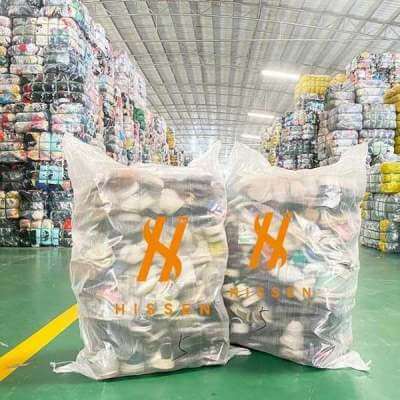
1. Challenges faced
Although the second-hand shoes market has broad prospects, it still faces many challenges. On the one hand, some consumers have doubts about the quality and hygiene of second-hand shoes, which limits the further expansion of the market. On the other hand, compared with fast fashion brands, second-hand shoes may have shortcomings in style updates and brand marketing.
2.Development opportunities
With the increase in environmental awareness and the change in consumer concepts, the second-hand shoes market has ushered in unprecedented development opportunities. The rise of online resale platforms has facilitated the circulation of second-hand shoes, and consumers can easily buy and sell second-hand shoes through these platforms. In addition, technological innovation has also brought new vitality to the second-hand shoes market. For example, the application of technologies such as virtual try-on and artificial intelligence recommendation has improved consumers’ shopping experience.
Ⅴ. How to meet the diverse needs of consumers?
1. Provide diversified product choices
To be able to meet the demands of consumers in different preferences, brands, and prices, more products should be added to the store. Besides the regular sports shoes and casual shoes, that is to say, high-end brands that will satisfy the consumers’ demand for quality and uniqueness may also be introduced. For example, there is a huge demand for second-hand shoes in top luxury brands. The classic styles and limited edition products are in even higher demand in the market. With professional second-hand luxury platforms cooperating, they might find more high-ended second-hand shoes resources to attract more consumers who search for quality.
Product categories can also be adjusted by suppliers in accordance with the season and trends. More lightweight sandals and slippers are introduced in summers while an increase is noticed in warm boots and sports shoes during winters. The same includes the provision of second-hand shoes with local characteristics for consumers coming from different regions and cultures, which would increase the attractiveness of the product as well.
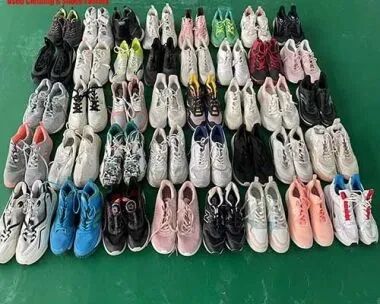
2. Improve product quality and service
(1) Improve product quality
It is a priority for suppliers to establish a strict quality inspection system to clean and repair second-hand shoes. This does not stop at repairs to the exterior parts, but rather includes examination and maintenance to the shoe’s inside parts that shall ensure comfort and durability for the shoes. For example, some first-class professional second-hand shoes repair studios may undertake the deep cleaning of shoes, replacement of insoles, or even heel repairs, etc., thus restoring the shoes close to the state of new products.
(2)Building brand while marketing.
This will also include offering high-quality after-sales services like return and exchange policies, and quality assurances thus improving the level of confidence with which the buyers make purchases. For instance, some online platforms offer 30 days’ no-reason return and exchange services. This can make the buyers feel more at peace with the fact that they are buying second-hand shoes. Sellers may also provide some value-added services to help buyers take better care of their second-hand shoes, like free shoes care advice and cleaning tools.
3. Strengthen brand building and marketing
In the fiercely competing market, brand building becomes highly crucial. Second-hand shoes suppliers can enhance brand awareness and reputation by creating a unique brand image. An example is styled brands giving shoes cultural connotations and emotional value by stories behind each pair of shoes. This type of marketing, story marketing, can not only draw the attention of consumers, but also increase the sense of identity of consumers with the brand.
Similarly, the utilization of social media and digital marketing will enhance the visibility of second-hand shoes and thus increase the number of buyers. For instance, high-quality product images and videos can be uploaded to sites like Instagram and TikTok to bring the unique appeal of second-hand shoes to the fore. Simultaneously, enlisting the help of fashion bloggers and opinion leaders who can recommend and review products will create plenty of exposure to the brand.
4. Establish a sustainable supply chain
To satisfy the need for environmental protection from buyers, suppliers of second-hand shoes should ensure a sustainable supply chain from the sourcing channel to logistic and distribution paths, i.e., use environmentally friendly packaging materials as one alternative that would lower carbon emissions during goods transport; this is besides good cooperation with sustainable suppliers to ensure that the source of second-hand shoes meets environmental standards. Therefore we can imply that suppliers should reuse and recycle the packaging materials of second-hand shoes to further lessen the impact on the environment.
5. Strengthen interaction with consumers
Effective consumer engagement will improve consumer satisfaction and loyalty; thus, understanding consumer needs and viewpoints will be most efficiently achieved through establishing a feedback mechanism. For example, take feedback from consumers through online surveys, social media reviews, and customer reviews and constantly improve products and services based on these drivers of feedback. Some more support to relationship building through the customer can be organized via offline events such as markets for second-hand shoes or repair workshops which enhance not only consumer participation and also create social visibility for the brand. Brands often organize second-hand shoes exchange meetings on special occasions or when a special event is held, where the consumer is allowed to take part in the cycle of second-hand shoes exchange thus creating an emotional bond between the brand and the consumer.
6. Use data-driven decision-making
In the current market setting, data forms a valuable base for corporate decisions. Sellers of used shoes can collect and analyze consumer data to view market trends and the preferences of the consumers so that they eventually make more accurate decisions. For instance, from the browsing and buying behaviors of consumers on online platforms, they get a precise idea of which style, brand, and price range is most preferred.
In addition, the use of data analysis can also help suppliers optimize inventory management. By predicting market demand, suppliers can adjust inventory levels in advance to reduce backlogs and out-of-stock situations.
Ⅵ. Conclusion: Future prospects of the second-hand shoes market
As environmental awareness has awakened increasing numbers of people and as consumer concepts change, this pre owned shoes market will foster previously unseen development opportunities. Still, continuous efforts in product quality, service, and brand building will yet be required to satiate the needs of varied consumers. Thus a deepened understanding of consumer needs and market trends can lend second-hand shoes suppliers quite an enriched grasp of market opportunities that will work toward sustainable development of the second-hand shoes market.In the future, the second-hand shoes market will not merely be the fusion of fashion and environmentalism. Added value will be conferred upon consumers—variety and choice. Second-hand shoes suppliers will have to take on the better upgrade of their product offerings, quality, and services, brand building, and marketing with technological innovation to improve the customer experience and the set-up of a sustainable supply chain, along with more specific consumer groups, personalization options, greater consumer participation, stronger brand trust and transparency, and data-driven decision-making for more preference to consumers as well as bringing more prosperity to the market.


